Service Request & Request Fulfillment
Meet the service request created by the end user for a fault or request, get the necessary approvals and quickly complete the process according to the need. Manage these steps easily through a user-friendly service portal!
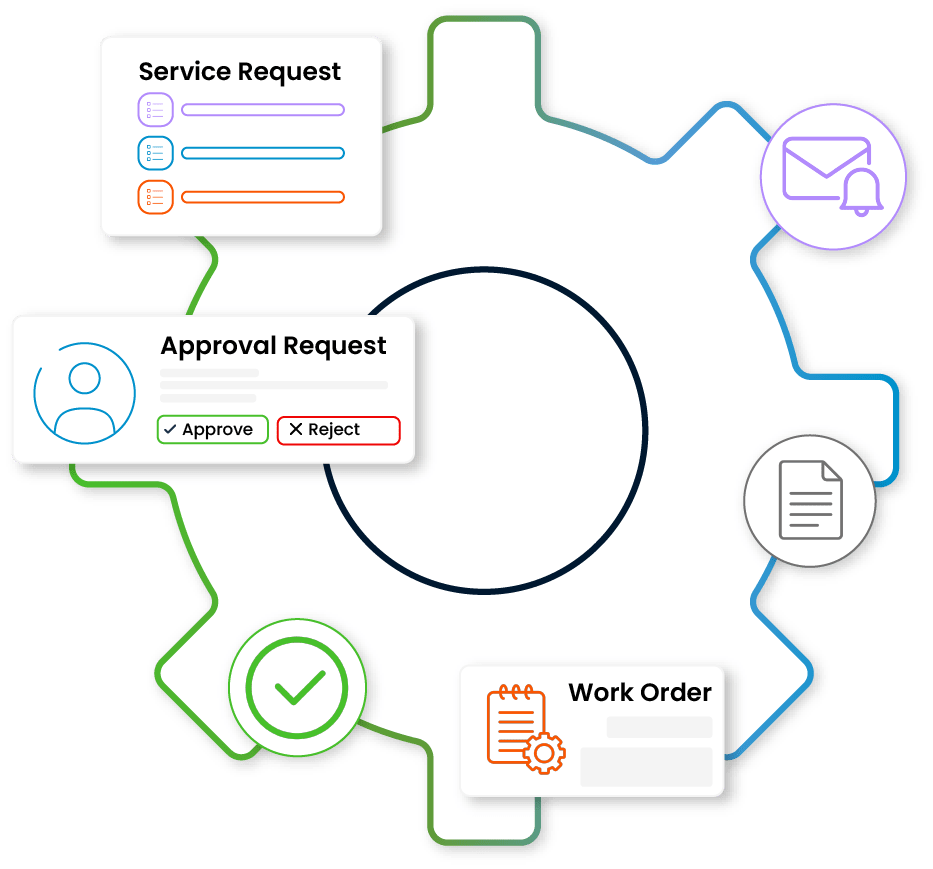

Meet the service request created by the end user for a fault or request, get the necessary approvals and quickly complete the process according to the need. Manage these steps easily through a user-friendly service portal
Benefits of the Service Request Module

Gathering all service request processes on a centralized platform eliminates operational complexity and communication breakdowns. Thus, each service request is quickly handled by the relevant teams; task distribution becomes clearer and service desk operations become more streamlined.

End users can easily complete the process of creating a service request in a few steps when they need it. In addition, they gain confidence by instantly tracking the status of their requests through the system and satisfaction increases thanks to the service portal experience.
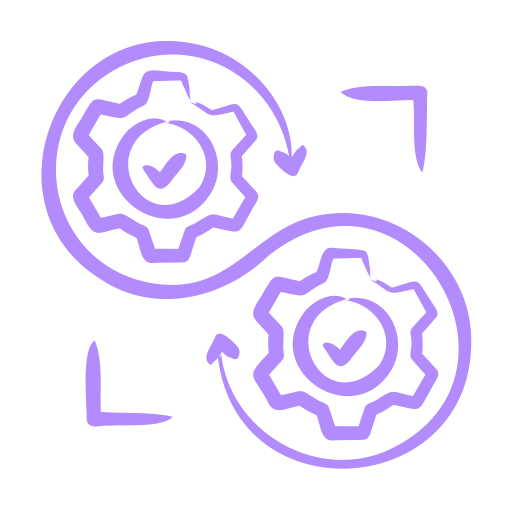
Solution times can be clearly monitored with predefined SLA targets for each request. Service request situations that pose a risk of SLA violation are flagged by the system and reported to the relevant teams, which ensures quality in demand fulfillment processes.

Each request can be tracked step by step; by whom, when it was opened and what stages it went through are recorded in the system. Thanks to this detailed tracking, coordination within the team is strengthened and service request management becomes more auditable.

Metrics such as total number of requests, average solution time and user satisfaction can be reported in the system. In this way, IT service desk managers can make more informed decisions and sustainably optimize IT performance.
Gathering all service request processes on a centralized platform eliminates operational complexity and communication breakdowns. Thus, each service request is quickly handled by the relevant teams; task distribution becomes clearer and service desk operations become more streamlined.
End users can easily complete the process of creating a service request in a few steps when they need it. In addition, they gain confidence by instantly tracking the status of their requests through the system and satisfaction increases thanks to the service portal experience.
Solution times can be clearly monitored with predefined SLA targets for each request. Service request situations that pose a risk of SLA violation are flagged by the system and reported to the relevant teams, which ensures quality in demand fulfillment processes.
Each request can be tracked step by step; by whom, when it was opened and what stages it went through are recorded in the system. Thanks to this detailed tracking, coordination within the team is strengthened and service request management becomes more auditable.
Metrics such as total number of requests, average solution time and user satisfaction can be reported in the system. In this way, IT service desk managers can make more informed decisions and sustainably optimize IT performance.

Warning: Undefined array key "background_image" in /home/spidyac/public_html/wp-content/plugins/elementor/includes/conditions.php on line 87
Warning: Trying to access array offset on value of type null in /home/spidyac/public_html/wp-content/plugins/elementor/includes/conditions.php on line 90
Warning: Undefined array key "background_image" in /home/spidyac/public_html/wp-content/plugins/elementor/includes/conditions.php on line 87
Warning: Trying to access array offset on value of type null in /home/spidyac/public_html/wp-content/plugins/elementor/includes/conditions.php on line 90
Warning: Undefined array key "background_image" in /home/spidyac/public_html/wp-content/plugins/elementor/includes/conditions.php on line 87
Warning: Trying to access array offset on value of type null in /home/spidyac/public_html/wp-content/plugins/elementor/includes/conditions.php on line 90
Warning: Undefined array key "background_image" in /home/spidyac/public_html/wp-content/plugins/elementor/includes/conditions.php on line 87
Warning: Trying to access array offset on value of type null in /home/spidyac/public_html/wp-content/plugins/elementor/includes/conditions.php on line 90
Users can create service requests in different categories such as breakdown, request or information and easily start their processes.
Request forms can be customized with dynamic fields according to organizational needs and special form structures can be defined for different business units. This structure enables users to submit the right request through the service portal with minimum effort.
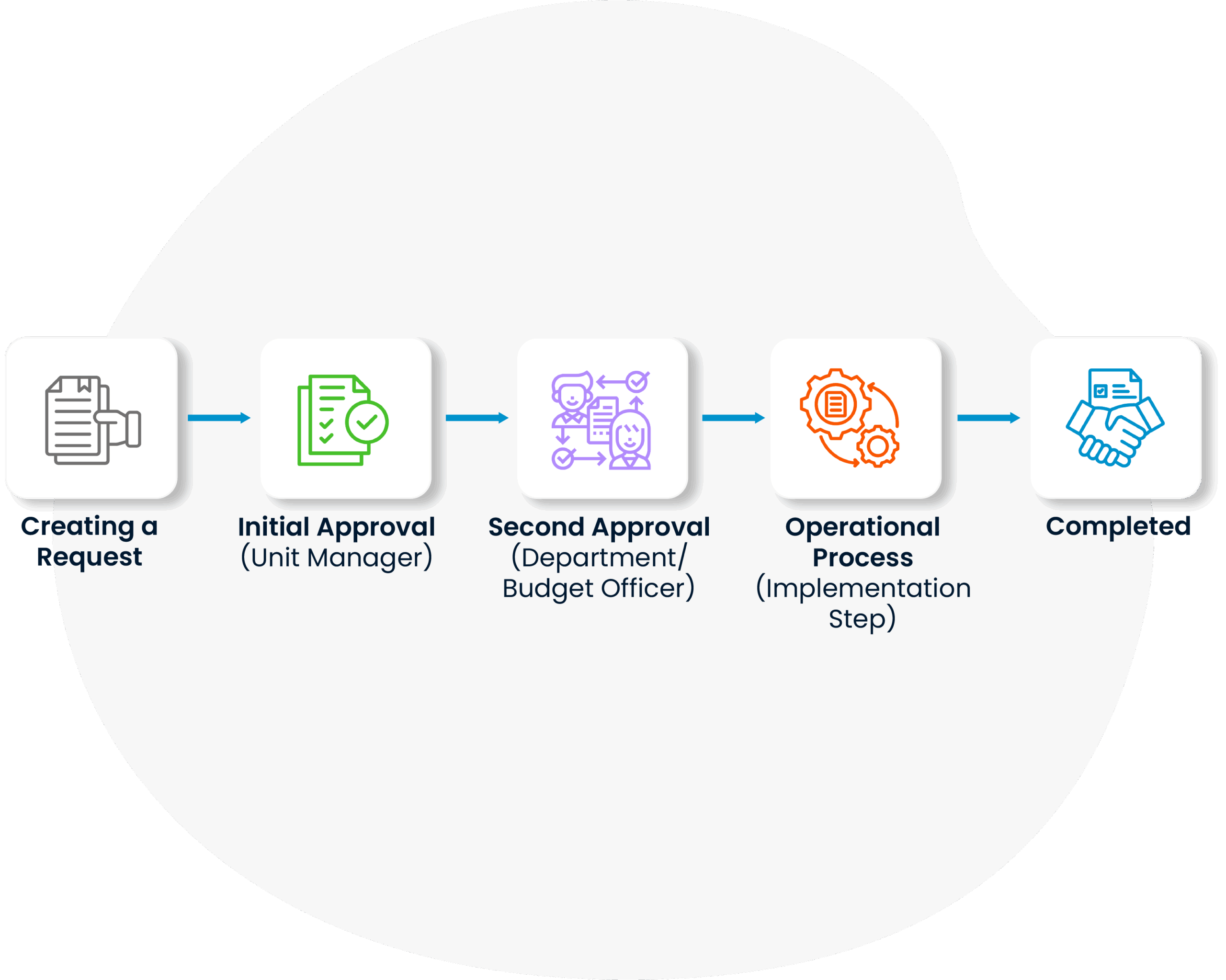
Warning: Undefined array key "background_image" in /home/spidyac/public_html/wp-content/plugins/elementor/includes/conditions.php on line 87
Warning: Trying to access array offset on value of type null in /home/spidyac/public_html/wp-content/plugins/elementor/includes/conditions.php on line 90
Warning: Undefined array key "background_image" in /home/spidyac/public_html/wp-content/plugins/elementor/includes/conditions.php on line 87
Warning: Trying to access array offset on value of type null in /home/spidyac/public_html/wp-content/plugins/elementor/includes/conditions.php on line 90
Warning: Undefined array key "background_image" in /home/spidyac/public_html/wp-content/plugins/elementor/includes/conditions.php on line 87
Warning: Trying to access array offset on value of type null in /home/spidyac/public_html/wp-content/plugins/elementor/includes/conditions.php on line 90
Warning: Undefined array key "background_image" in /home/spidyac/public_html/wp-content/plugins/elementor/includes/conditions.php on line 87
Warning: Trying to access array offset on value of type null in /home/spidyac/public_html/wp-content/plugins/elementor/includes/conditions.php on line 90
Each request goes through approval steps defined in accordance with the hierarchy of the organization.
Who has the request, which approval it is waiting for and its next step can be easily viewed on the system. This structure increases the traceability and control of service request management processes.
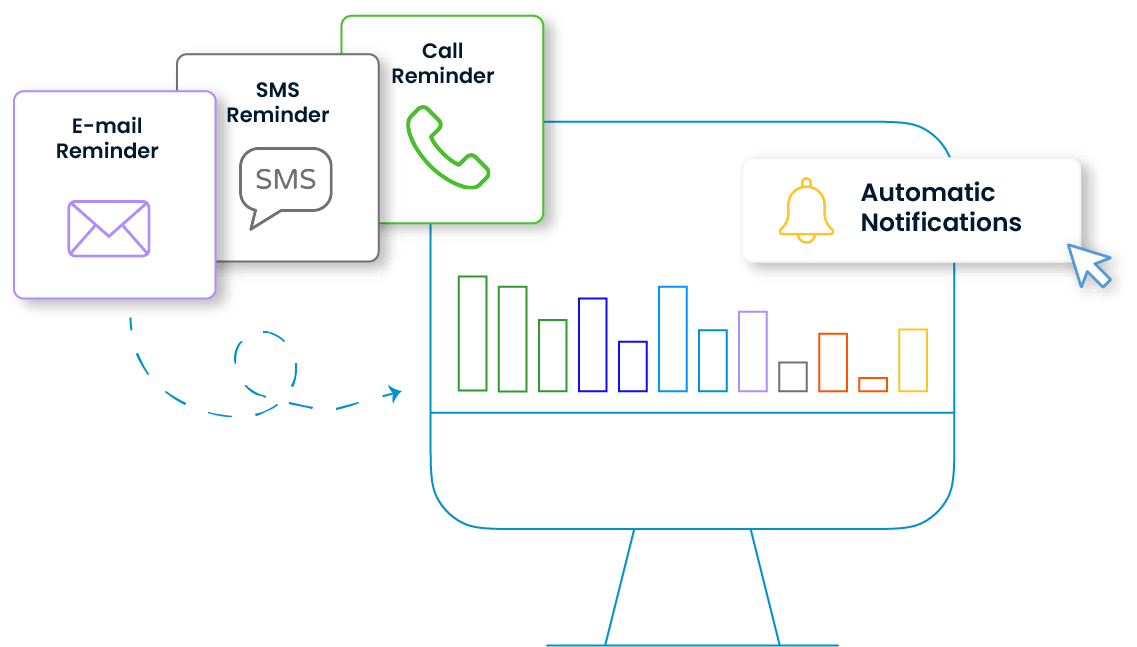
Warning: Undefined array key "background_image" in /home/spidyac/public_html/wp-content/plugins/elementor/includes/conditions.php on line 87
Warning: Trying to access array offset on value of type null in /home/spidyac/public_html/wp-content/plugins/elementor/includes/conditions.php on line 90
Warning: Undefined array key "background_image" in /home/spidyac/public_html/wp-content/plugins/elementor/includes/conditions.php on line 87
Warning: Trying to access array offset on value of type null in /home/spidyac/public_html/wp-content/plugins/elementor/includes/conditions.php on line 90
When the request status changes, the system automatically informs both the user who created the request and the relevant technical team. In this way, information gaps and follow-up difficulties are prevented; the request realization steps proceed uninterruptedly.
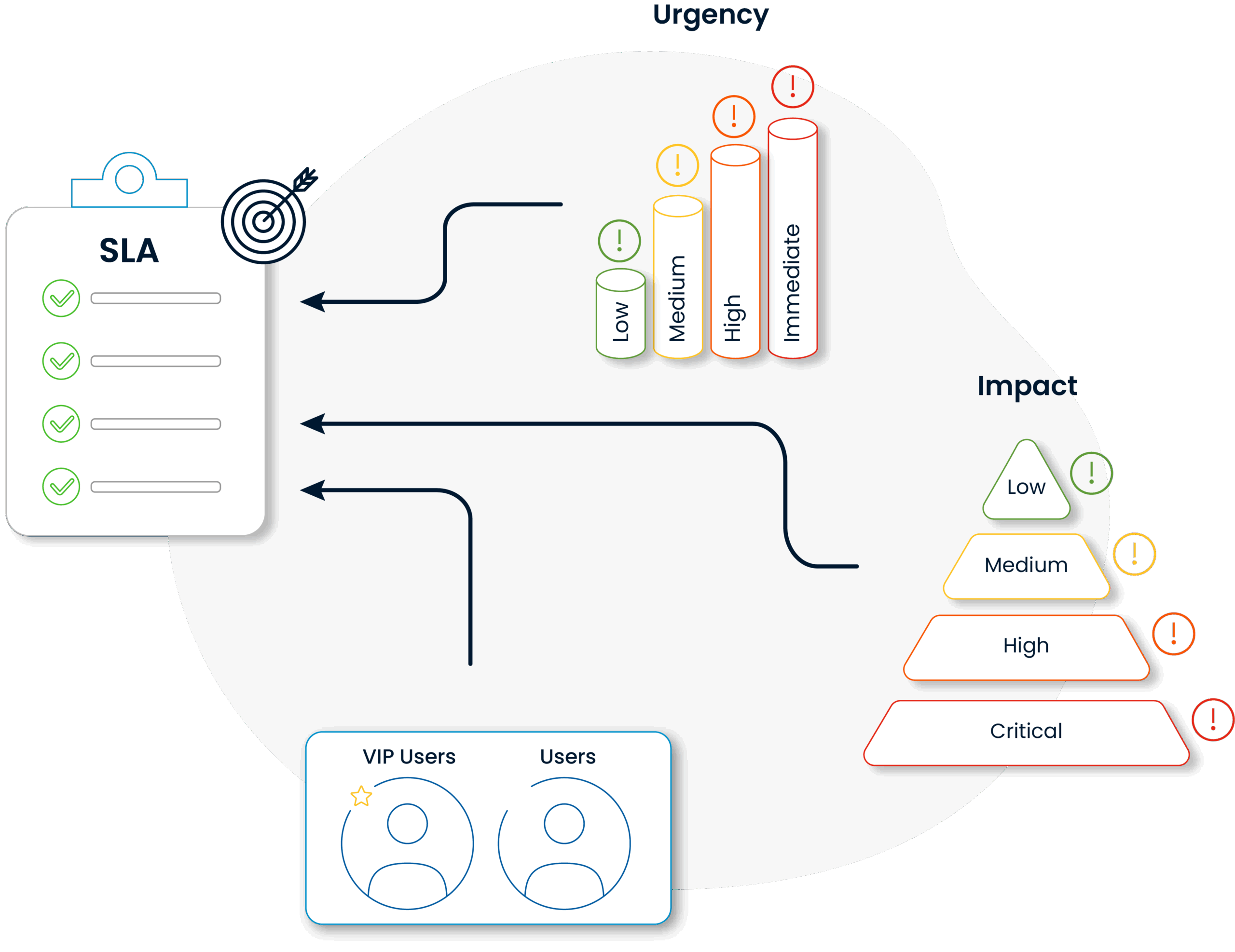
Warning: Undefined array key "background_image" in /home/spidyac/public_html/wp-content/plugins/elementor/includes/conditions.php on line 87
Warning: Trying to access array offset on value of type null in /home/spidyac/public_html/wp-content/plugins/elementor/includes/conditions.php on line 90
Warning: Undefined array key "background_image" in /home/spidyac/public_html/wp-content/plugins/elementor/includes/conditions.php on line 87
Warning: Trying to access array offset on value of type null in /home/spidyac/public_html/wp-content/plugins/elementor/includes/conditions.php on line 90
Warning: Undefined array key "background_image" in /home/spidyac/public_html/wp-content/plugins/elementor/includes/conditions.php on line 87
Warning: Trying to access array offset on value of type null in /home/spidyac/public_html/wp-content/plugins/elementor/includes/conditions.php on line 90
Warning: Undefined array key "background_image" in /home/spidyac/public_html/wp-content/plugins/elementor/includes/conditions.php on line 87
Warning: Trying to access array offset on value of type null in /home/spidyac/public_html/wp-content/plugins/elementor/includes/conditions.php on line 90
Specific SLA targets can be defined for each type of service request and the system monitors the process in accordance with these targets.
For requests approaching the SLA deadline, automatic alerts are sent to the relevant people, making service quality sustainable.
Warning: Undefined array key "background_image" in /home/spidyac/public_html/wp-content/plugins/elementor/includes/conditions.php on line 87
Warning: Trying to access array offset on value of type null in /home/spidyac/public_html/wp-content/plugins/elementor/includes/conditions.php on line 90
Warning: Undefined array key "background_image" in /home/spidyac/public_html/wp-content/plugins/elementor/includes/conditions.php on line 87
Warning: Trying to access array offset on value of type null in /home/spidyac/public_html/wp-content/plugins/elementor/includes/conditions.php on line 90
Warning: Undefined array key "background_image" in /home/spidyac/public_html/wp-content/plugins/elementor/includes/conditions.php on line 87
Warning: Trying to access array offset on value of type null in /home/spidyac/public_html/wp-content/plugins/elementor/includes/conditions.php on line 90
Warning: Undefined array key "background_image" in /home/spidyac/public_html/wp-content/plugins/elementor/includes/conditions.php on line 87
Warning: Trying to access array offset on value of type null in /home/spidyac/public_html/wp-content/plugins/elementor/includes/conditions.php on line 90
Focusing on the user experience, the process is monitored not only according to the duration but also according to the quality of interaction.
Service desk performance is evaluated based on the service quality perceived by the user and opportunities for improvement are created.

Gathering all service request processes on a centralized platform eliminates operational complexity and communication breakdowns. Thus, each service request is quickly handled by the relevant teams; task distribution becomes clearer and service desk operations become more streamlined.

End users can easily complete the process of creating a service request in a few steps when they need it. In addition, they gain confidence by instantly tracking the status of their requests through the system and satisfaction increases thanks to the service portal experience.

Solution times can be clearly monitored with predefined SLA targets for each request. Service request situations that pose a risk of SLA violation are flagged by the system and reported to the relevant teams, which ensures quality in demand fulfillment processes.

Each request can be tracked step by step; by whom, when it was opened and what stages it went through are recorded in the system. Thanks to this detailed tracking, coordination within the team is strengthened and service request management becomes more auditable.

Metrics such as total number of requests, average solution time and user satisfaction can be reported in the system. In this way, IT service desk managers can make more informed decisions and sustainably optimize IT performance.
Features of the Service Request Module
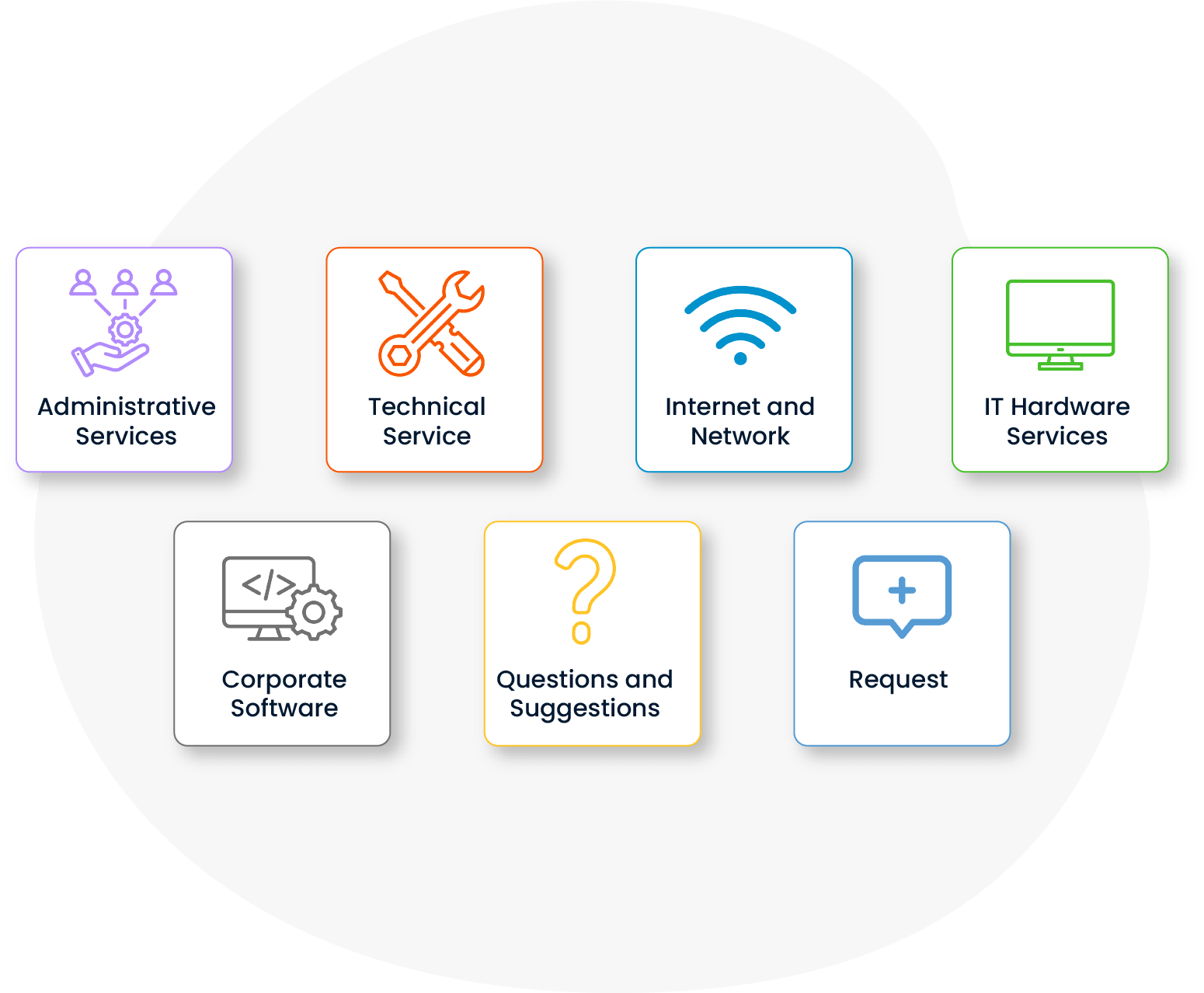
Flexible Demand Generation
Flow Control with Approval Mechanisms


Automatic Notifications and Reminders
XLA Based Process Tracking



Frequently Asked Questions (FAQ)
The system automatically flags the requests that exceed the SLA time and provides detailed reports to both managers and relevant teams. Through these reports, the stage at which delays occur can be analyzed and demand fulfillment processes can be optimized.
Yes. Users are instantly informed about the status of the service requests they have created via in-system notifications and e-mail. Thus, users can easily track the status of their requests through the service portal.
Yes. Priority levels such as low, medium or high can be assigned when creating a service request. In this way, critical tasks are prioritized and IT service desk operations become more efficient.
Yes. It may not always be the priority selected when creating a service request. In order to reach a more accurate conclusion, it is possible to automatically calculate the most accurate priority information with the Impact and Urgency options that ask users when opening a service request record.
Yes. Where necessary, a single service request can be assigned to multiple staff members. This feature facilitates team collaboration and speeds up the request fulfillment process, especially in complex or multi-step requests.
Yes. After the request is completed, the system automatically sends a satisfaction survey to users. This data is used to measure user feedback and evaluate incident service request processes.
If You Have Any Other Questions, Contact Us!
The system automatically flags the requests that exceed the SLA time and provides detailed reports to both managers and relevant teams. Through these reports, the stage at which delays occur can be analyzed and demand fulfillment processes can be optimized.
Yes. Users are instantly informed about the status of the service requests they have created via in-system notifications and e-mail. Thus, users can easily track the status of their requests through the service portal.
Yes. Priority levels such as low, medium or high can be assigned when creating a service request. In this way, critical tasks are prioritized and IT service desk operations become more efficient.
Yes. It may not always be the priority selected when creating a service request. In order to reach a more accurate conclusion, it is possible to automatically calculate the most accurate priority information with the Impact and Urgency options that ask users when opening a service request record.
Yes. Where necessary, a single service request can be assigned to multiple staff members. This feature facilitates team collaboration and speeds up the request fulfillment process, especially in complex or multi-step requests.
Yes. After the request is completed, the system automatically sends a satisfaction survey to users. This data is used to measure user feedback and evaluate incident service request processes.
